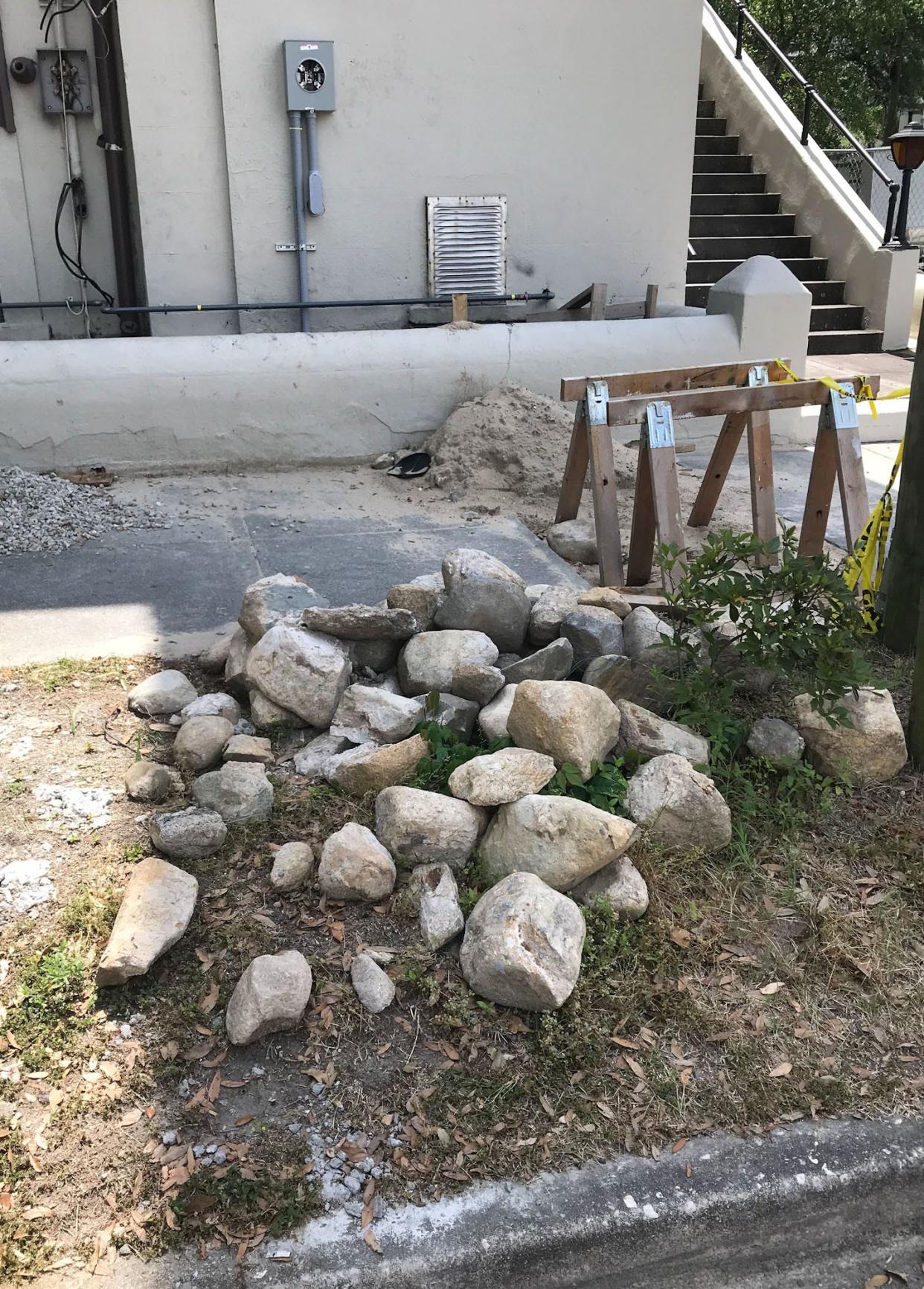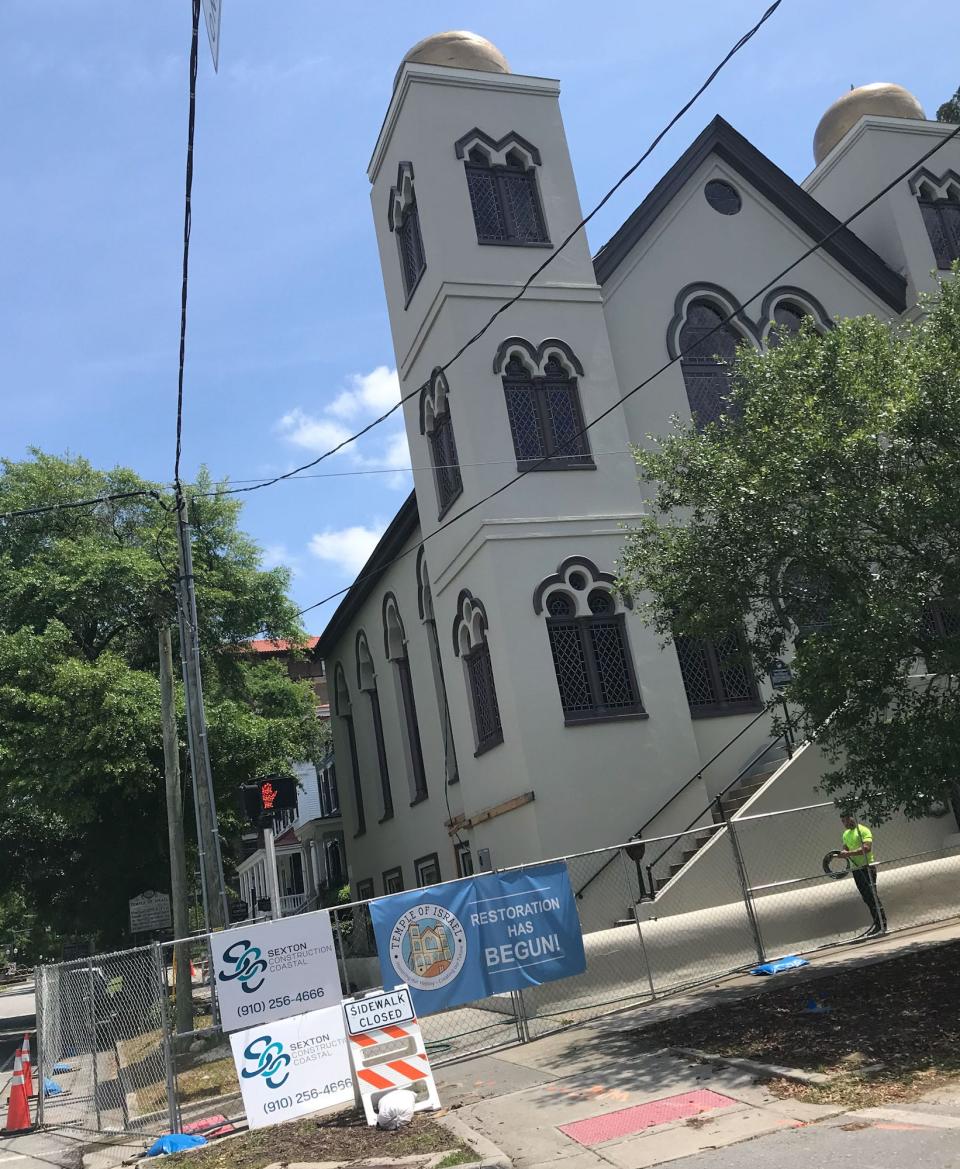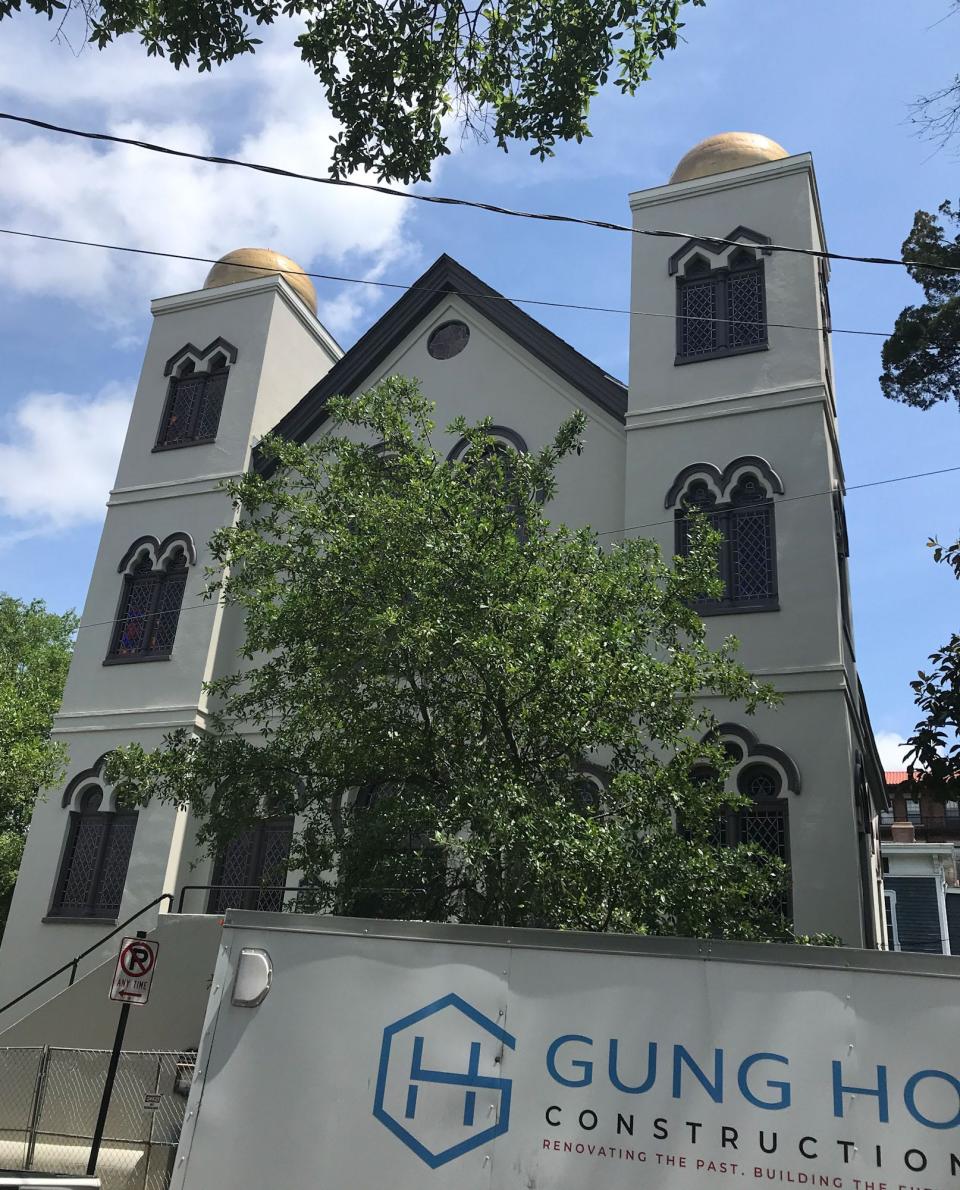Ballast, but not the hotel: Rare stones found during Wilmington synagogue renovations

Much-needed renovations are underway at one of Wilmington's most important buildings: the Temple of Israel at Fourth and Market streets, believed to be the oldest synagogue in North Carolina.
As one might expect when you go digging around and beneath a building that dates to 1876, workers have made some interesting finds. Among them: Large stones that were brought to Wilmington on one ship or another in the 19th century as ballast, before they found their way beneath the Temple as part of its foundation, where "they happily sat for 150 years," said Josh Heinberg, president of the Temple's board of trustees. "I love it. I've been giving them to people who donate money" for the building's restoration.
The Temple's congregation recently raised well over its goal of $500,000 to make repairs, synagogue leaders said, much of it from outside sources. One of the building's drainpipes was damaged during Hurricane Florence in 2018 and never properly repaired, leading to continuing and extensive water damage.
The synagogue closed its doors to the 168 families in its congregation in early 2020, initially for pandemic reasons. Once synagogue leaders realized the extent of the damage, all Temple activities were moved to the nearby Reibman Center for Kehillah, the Temple's annex at 922 Market St.

Beverly Tetterton, a Wilmington historian and Temple member, said the ballast stones probably came from Europe or possibly the Caribbean, which is where she said some ballast stones unearthed in Wilmington have been traced back to.
"The ballast stones are really cool," Tetterton said. "They could be from pirate ships for all I know."
Steve Unger, buildings and grounds chair for the Temple, said that when the building was constructed, "Only the corners of the foundation used brick, apparently to save costs. Ballast stones were easily available, and they were used to compose and anchor the rest of the foundation. At this point, much of the foundation on the Market Street side (of the Temple) is exposed."
The stones fulfilled their purpose long ago, Heinberg said, and can now be retired as workers continue repairing pipes, restoring damaged windows, replacing the HVAC system, shoring up the foundation and waterproofing the building.
"We're really buttoning this thing up" to prevent future water damage, said Bruce Bowman of Wilmington's Bowman Murray Hemingway Architects, which is leading the project to repair the Temple.
Bowman said enhanced security features are being added as well, including new doors. Houses of worship of all stripes "used to be left unlocked. Those days are over," Bowman said, especially given attacks against churches, synagogues and mosques in recent years.
As part of the project, Heinberg said, power lines leading to the building will be buried underground, providing protection against future storms and power outages while providing better sightlines for pictures of the historic structure.

More Wilmington history: Telling the story of the Temple of Israel, and that of Jewish people in Wilmington
The Temple's distinctive, Moorish-revival style of architecture — which includes two gold-painted domes on the roof — makes it stand out among downtown's many houses of worship. The building retains most if not all of its beauty both inside and out despite the damage, with arched, stained glass windows among the stand-out features.
"This building isn't just important to Jews. It's important to everybody in Wilmington," Heinberg said.
He added that he's been heartened by "this really remarkable outpouring of support from the community." Christians, Jews, Muslims, even secular people, donated money. "All came together to save this building because it was important to them."
Because the Temple exceeded its fundraising goals, Heinberg said, "We are trying to build an endowment for future repairs," and is still raising money.
Bowman said that, despite the fairly recent water damage, overall the Temple "has been pretty well cared for over the years."
"I personally love working on old buildings, but old buildings can be intimidating," he added. "You just have to roll up your sleeves and do the work."
Heinberg, who said he was born in 1972, noted that the idea to build the Temple "started in 1872. Back then, somebody probably said, '100 years from now, somebody's going to be born who's going to spend their life in this building.'"
It's something he keeps in mind, he said, in trying to make sure the Temple is going to be there decades from now. The current renovations are scheduled to be complete by late summer.
"We'd like it to last another 150 years," Tetterton said.
This article originally appeared on Wilmington StarNews: Renovations underway to historic Temple of Israel in Wilmington NC

